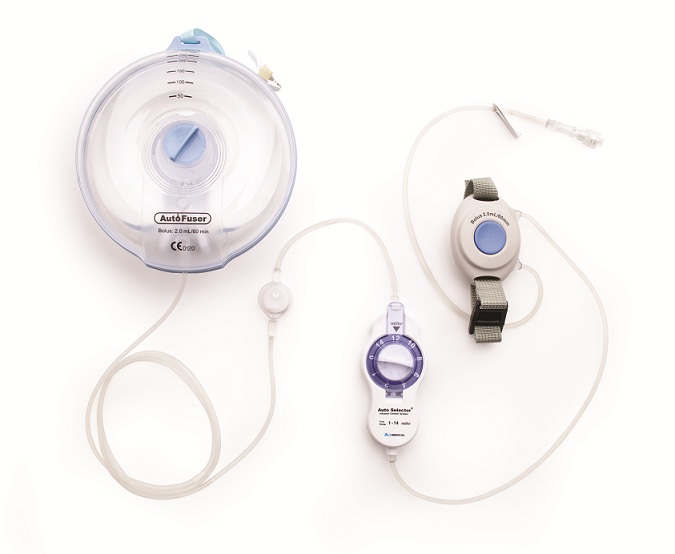
Pain pumps deliver controlled doses of pain medicine directly to the spinal cord. Pain pumps have been another way to reduce pain since the 1980s. It was originally created as an alternative treatment for unrelieved pain from cancer, and eventually was applied to non-cancerous conditions. The device is actually fairly simple and comfortable for most patients that undergo implantation of the pump. A small pump the size of a hockey puck is surgically placed underneath the skin in the abdomen. A tiny tube called a catheter is connected to the pump and delivers small amounts of medicine to the spinal fluid and spinal cord.
Before pain pumps are implanted, patients go through a catheter trial to help ensure that pain relief occurs and the side effects are minimal. After implantation, getting pump refills is pretty simple. Your device is scanned to confirm the dose, medications, and to make sure it is still working properly. Then, the new medication is placed into the pump through a needle that is inserted through the skin overlying the pump. How often the refills occur depends on the severity of your pain and the dosage. Sometimes refills may be weeks or even months apart.
A much smaller dose of medicine is needed because it is being delivered directly to the spinal fluid, compared to oral medications. The pain pump delivers medications that bypass the stomach and the liver making it more accessible to the body than oral medications. Because the medicines are inserted directly into the spinal fluid, most opioids, local anesthetics, and other specialty medicines are more potent. In fact, doctors control the number and type of drugs used in the pump, and their doses as well. They can program the pump to infuse at a different rate during the day or maintain the same rate every day. Doses are changed via telemetry by an external programmer that is placed over the skin. Patients can also use a handheld device that allows them to change the drug dose by remote control. This method of delivering drugs can be more cost effective than continually refilling oral prescription medications.
There are some possible side effects to consider such as surgical complications, like infection, drug side effects, blood or fluid in the area where the pump is implanted, spinal fluid leaks resulting in headaches or sometimes other problems. Injury to the spinal cord is rare.
Pain pumps have been very effective in a small subset of patients, especially for those with bad cancer pain that is unresponsive to other pain-relieving medicines or injections A drug called baclofen, an antispasmodic agent can be placed in these pumps to effectively reduce the pain of spasms in the body from multiple sclerosis, spinal cord injury, or other conditions that cause spasticity.
